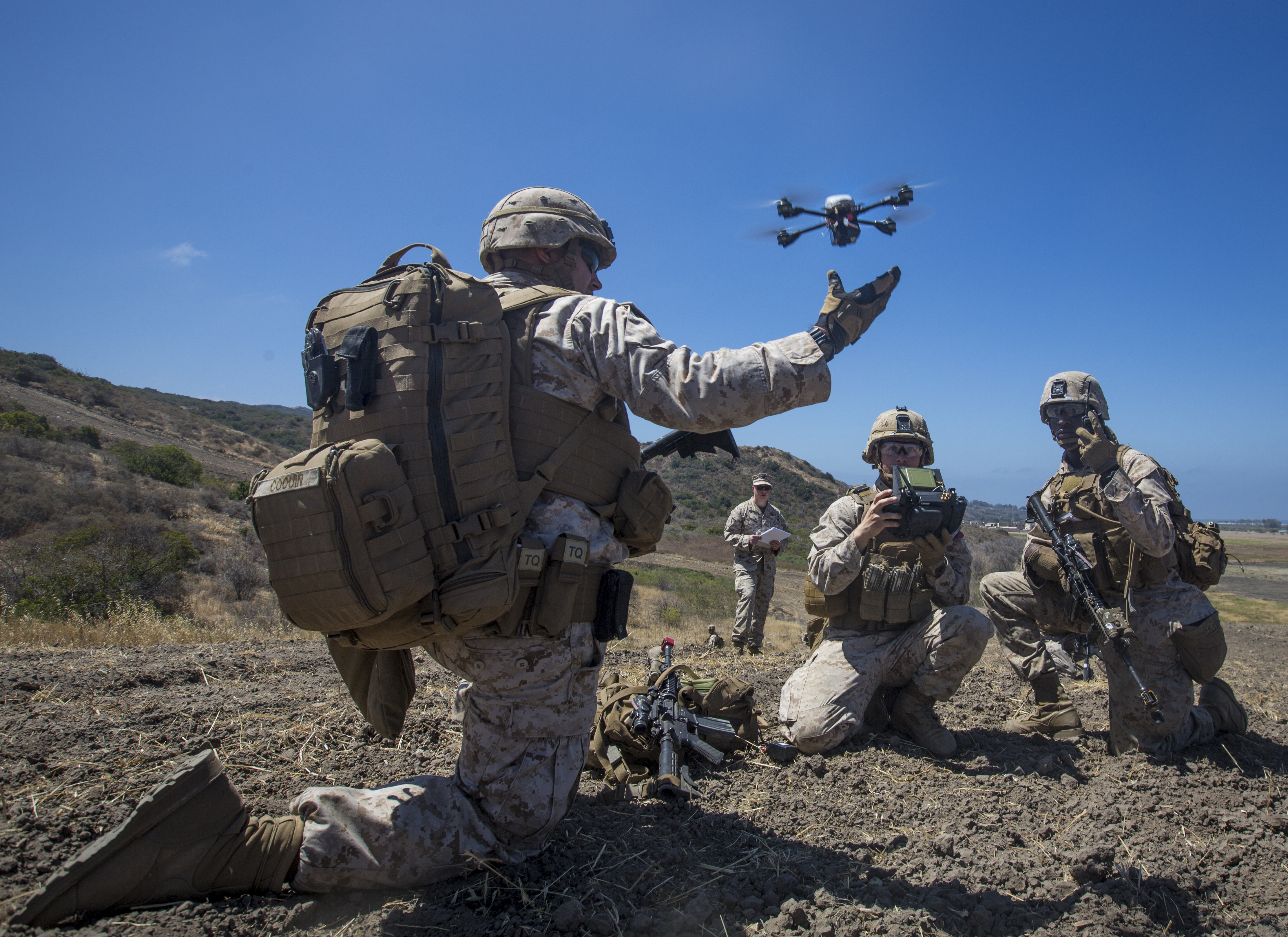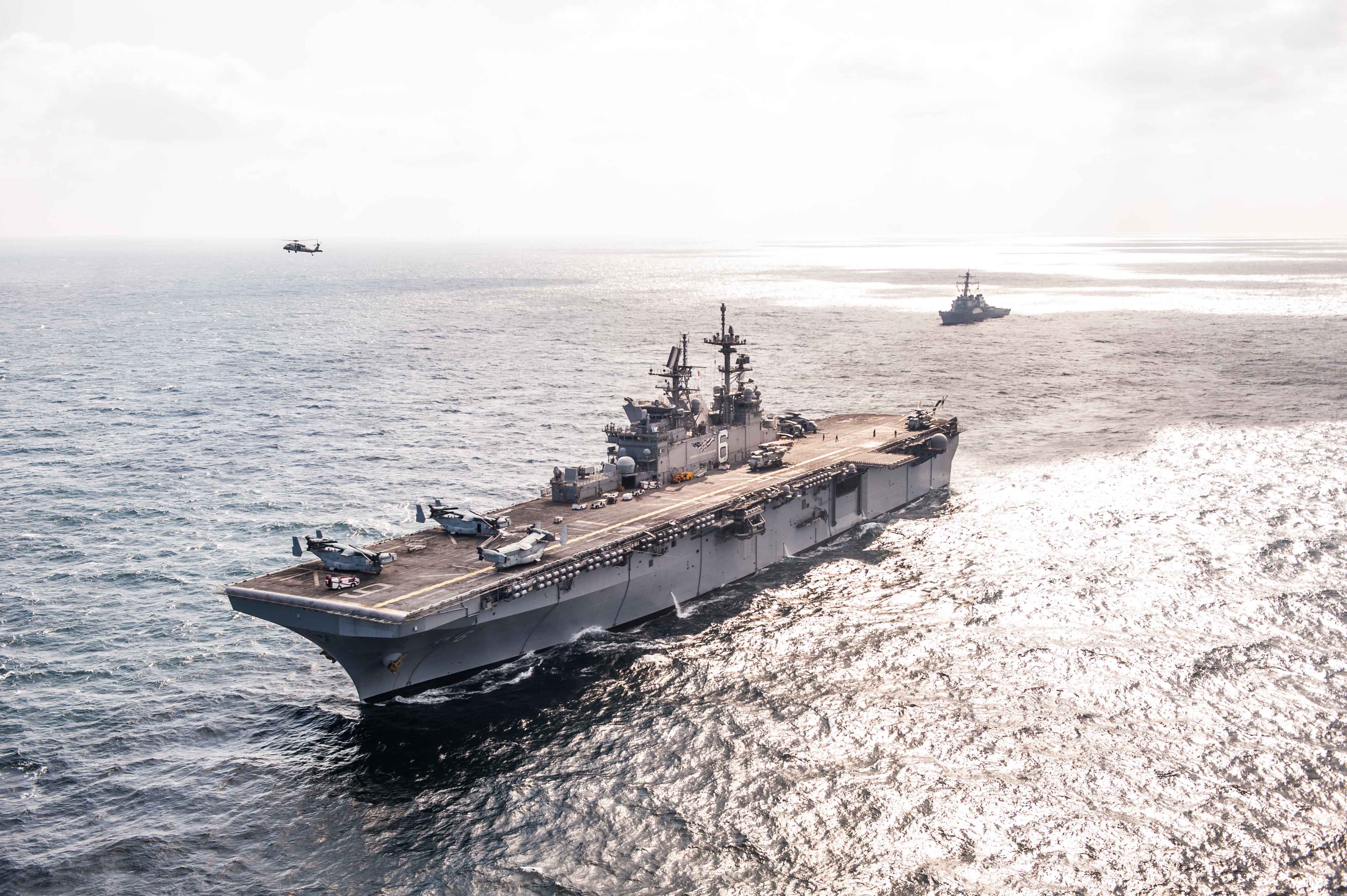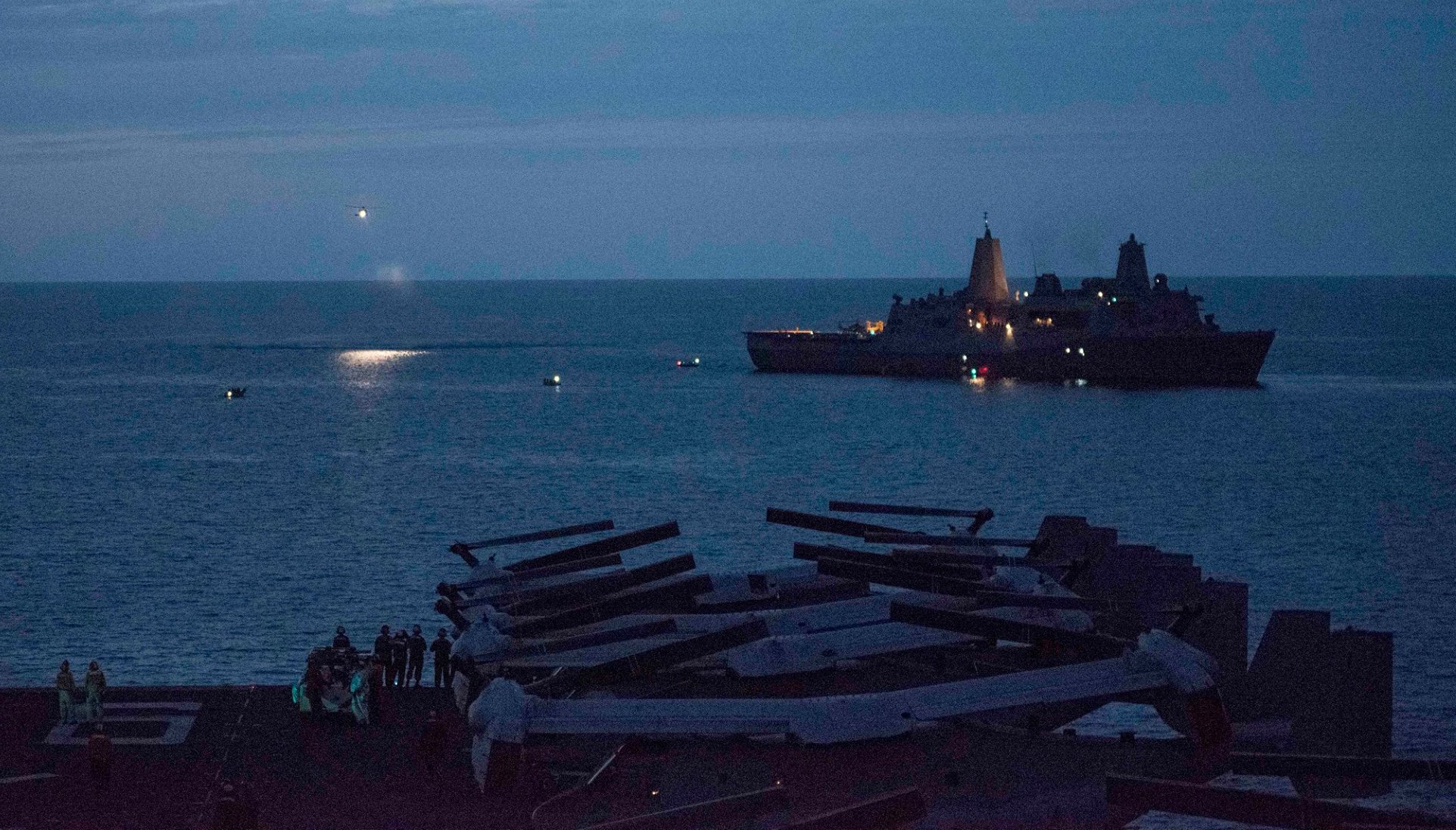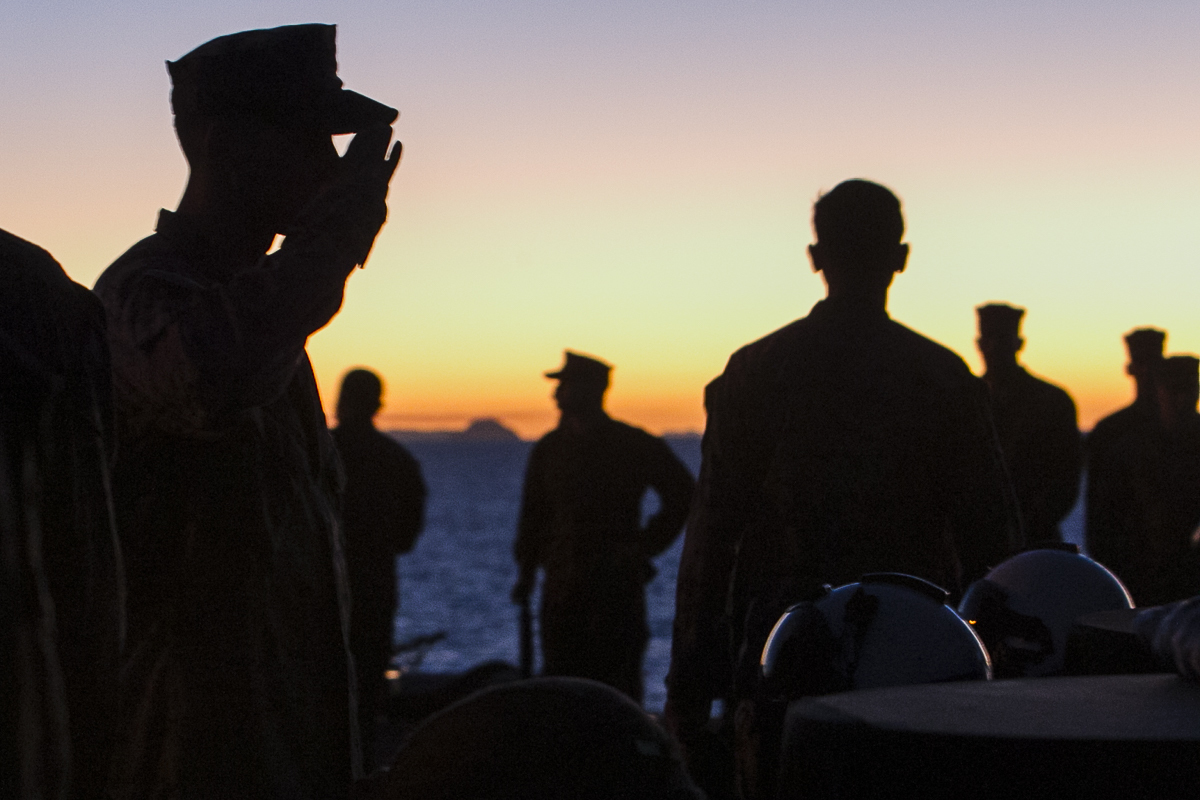USNI News polled its writers, naval analysts and service members on what they consider the most important military and maritime stories in 2017.
The following is part of a series. Please also see Top Stories 2017: Navy Acquisition, International Acquisition, Navy Operations, Marine Corps and Coast Guard Acquisition, International Operations and New Administration.
For the Marine Corps, 2017 represented a major step towards achieving the vision of future operations it laid out in last year’s Marine Corps Operating Concept. It deployed its F-35B Joint Strike Fighter around the globe, sent the first-in-class USS America (LHA-6) on its maiden deployment to the Pacific and the Middle East, and conducted a massive amount of experimentation to understand the technologies, skills and procedures the service would need to fight and win in the future.
New Concepts

After rolling out a new Marine Corps Operating Concept (MOC) in 2016, the service this year went about exploring the finer details of that concept and how they might begin to train and equip the force to support their ideas for a future Marine Corps.
Chief among those new ideas is the Littoral Operations in a Contested Environment concept (LOCE) and its sub-component, Expeditionary Advance Base Operations (EABO). With these operations, the Navy wouldn’t just bring the Marines ashore (blue in support of green), but the Marines would help fight at sea and would fight from the shore to support the Navy gaining and retaining sea control (green in support of blue). Securing islands in a littoral operation to support missile launches or aviation operations would be important, as would disaggregated small-unit operations once ashore.
In October the Marines launched a High Mobility Artillery Rocket System (HIMARS) from the flight deck of amphibious transport dock USS Anchorage (LPD-23) and hit a target 70 kilometers away in support of sea control, in one experiment to test the LOCE concept. The service also conducted a Ship-to-Shore Maneuver Exploration and Experimentation Advanced Naval Technology Exercise (S2ME2 ANTX) to explore what types of technologies – surface connectors, unmanned surface and aerial vehicles, jammers, mine detectors and more – could assist in this ship-to-shore operation of the future. Commandant of the Marine Corps Gen. Robert Neller made clear this year “we’re going to have to fight to get to the fight” and said further developing the LOCE and EABO portions of the Marine Corps Operating Concept would help the service take “a new look at an old mission – coming from the sea, which is as old as the Romans and the Greeks – but in an environment that’s changed.”
Also in pursuit of achieving the vision laid out in the MOC, the 7th Marine Regiment in its rotation as the Special Purpose Marine Air-Ground Task Force (MAGTF) Crisis Response unit in U.S. Central Command taught 48 members of the unit to operate a 3D printing lab in theater. The Marines printed 25 Nibbler small unmanned aerial vehicles to learn how to conduct additive manufacturing at a tactical level and work out policy and logistics issues to support future in-theater 3D printing efforts, as well as to learn more about how adversaries may use 3D printing and commercial off-the-shelf products and therefore how to defend against them.
The Marines’ experimental force, 3rd Battalion, 5th Marines out of Camp Pendleton, also deployed this year to try out new technologies, organizations and operating concepts in their work with the 31st Marine Expeditionary Unit in the Pacific.
New Platforms

The U.S. Marine Corps got to show the world what its future operations might look like, with global deployments of the F-35B Joint Strike Fighter and the maiden deployment of its aviation-focused amphibious assault ship USS America (LHA-6).
The service began 2017 by sending its first F-35B squadron, Marine Fighter Attack Squadron (VMFA) 121, to Marine Corps Station Iwakuni in Japan. The Marine Corps intended to spend the year training, introducing the new aircraft to allies – many of whom will also buy the Joint Strike Fighter in the coming years – and beginning to incorporate the jet into plans, ahead of the planned 2018 first deployment of the F-35B aboard an amphibious ship.
The world got a glimpse of the F-35B in action in August, when, in response to North Korea launching an intermediate-range ballistic missile towards Japan on Aug. 28, four F-35Bs participated in a show-of-force operation. Two Air Force B-1B Lancers out of Andersen Air Force Base in Guam, the four F-35s out of MCAS Iwakuni, two Japanese Air Self-Defense Force F-15Js and South Korean F-15Ks flew over Japan and practiced dropping bombs over South Korea.

America departed San Diego for its maiden deployment in July, after spending the early part of the year conducting pre-deployment training and experimenting with a few different load-out options for deployment – since America does not have a well deck, the America Amphibious Ready Group and 15th Marine Expeditionary Unit leadership had to work together to figure out what Marine ground vehicles and gear would go on which ships in such a way that they could all be brought ashore efficiently by the surface connectors and aircraft located on each of the three ships in the ARG.
To prepare for a future environment with the F-35B and the America-class amphibs – both of which have greatly increased computing and communications capabilities compared to the older planes and ships they replace – the Navy and Marine Corps conducted upgunned Expeditionary Strike Group (ESG) operations during the annual exercise Talisman Saber in Australia. The exercise paired an ESG with destroyers – an early step towards a future operation that could involve an F-35B locating threats and sending target-quality data back to a destroyer, which would launch a Standard Missile to destroy the threat.
Mishaps and Fatalities

The Marine Corps suffered two major aviation mishaps this year, resulting in the deaths of 18 Marines and one sailor.
On July 10, a Marine Corps KC-130T transport plane crashed in a field in Mississippi, in the deadliest Marine Corps aviation mishap since 2005. Nine members of reserve squadron Marine Air Refueler Transport Squadron 452 were killed in the crash, along with six Marines and a Navy corpsman from the 2nd Marine Raider Battalion in Marine Corps Forces Special Operations Command, who were flying to the West Coast for training.
The cause of the crash was not immediately identified, and the Marine Corps grounded VMGR-452 – the only squadron still operating the KC-130T, whereas the rest of the force has upgraded to the KC-130J – while the investigation took place. The service never formally announced the cause of the crash but did note that a problem appeared to have occurred at cruising altitude and that the plane fell to the ground in at least two pieces.

Less than a month later, on Aug. 5, an MV-22 Osprey crashed while attempting to land on USS Green Bay (LPD-20) operating off the coast of Australia. Twenty-three Marines were rescued after the crash in a massive search and rescue effort by the Bonhomme Richard Expeditionary Strike Group and Australian forces, but three Marines remained missing when the search effort was called off. An Australian dive team found the sunken Osprey and recovered the remains of the three Marines killed in the crash. The 31st Marine Expeditionary Unit, operating aboard the Bonhomme Richard ESG, held a 48-hour operational pause following the fatal crash, and the following week Marine Corps leadership ordered that all aviation units conduct a 24-hour stand-down at some point in the next two weeks to review flight safety and fundamentals.





